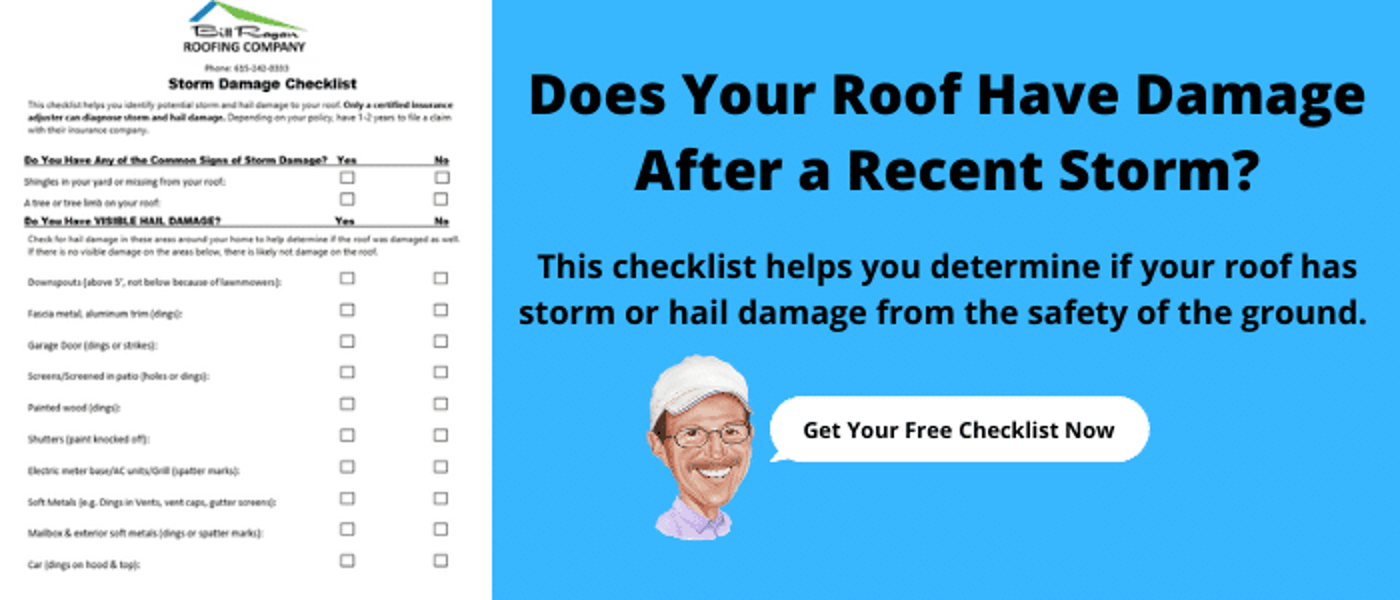Hail storms are becoming more and more frequent across the United States. With this increase in storms comes an increase in hail damage to roofs.
Unfortunately, traditional asphalt shingles can’t handle one huge hail storm or the continuous barrage of hail stones over the years. That’s why manufacturers make Class 4 impact-resistant shingles.
But what are Class 4 impact resistant-shingles? And how did they get this rating?
For over 30 years, the team at Bill Ragan Roofing has taken pride in educating homeowners on the nuances of shingles. Because of this, I’ll break down what you need to know about Class 4 impact-resistant shingles.
This article answers the following questions:
- What are Class 4 impact-resistant shingles?
- How do shingles qualify for a Class 4 impact rating?
- Are Class 4 impact-resistant shingles worth it?
- What are the best Class 4 impact-resistant shingles?
What are Class 4 impact-resistant shingles?
Impact-resistant shingles (also called IR) are made to be more resistant to hail damage to your roof. While there are 4 total classes, a Class 4 impact rating is the highest a roofing material can achieve.
There are a couple of ways manufacturers make these impact-resistant shingles.
The first way is by adding a polymer-modified mesh to the asphalt shingles. This ensures the shingles hold together instead of splitting when hail or another object hits them.
The other way is adding a rubber-type polymer (like styrene-butadiene-styrene aka SBS) to the asphalt shingles. Adding SBS or another rubber-like polymer creates more flexibility, which allows the hail to bounce off the shingles instead of absorbing the impact.
With Class 4 IR shingles, your roof can withstand hail up to 2” in diameter. But just know that the shingles become less resistant as they age, even with the above modifications.
How do shingles qualify for a Class 4 impact rating?
As I said, Class 4 impact-resistant shingles are able to withstand roof damage from hail up to 2” in diameter. But how do shingle manufacturers test and qualify for a Class 4 rating?
There are two organizations that test shingles for impact resistance: Factory Mutual (FM) and Underwriters Laboratories (UL). They both test the same thing, but UL uses steel to replicate the force of hail while FM uses ice balls that are denser and harder than most hailstones.
The test has four ratings that classify a shingle's ability to withstand the steel or ice ball’s impact when dropped from 20 feet. Just know the FM test uses the same size ice balls as the steel balls in the UL test, so the classifications are also the same.
Below are the Classifications for both UL and FM impact ratings
- Class 1 shingles can withstand steel/ice balls that are 1.25” in diameter.
- Class 2 shingles can withstand steel/ice balls that are 1.5” in diameter.
- Class 3 shingles can withstand steel/ice balls that are 1.75” in diameter.
- Class 4 shingles can withstand steel/ice balls that are 2” in diameter.
Based on the info above, a shingle must be able to handle the impact of a 2” steel or ice ball dropped from 20 feet to get a Class 4 impact rating. Unfortunately, the tests can’t 100% replicate shingle performance due to factors like temperature, shingle age, the angle, and more when the hailstorm hits your roof.
Are Class 4 impact-resistant shingles worth it?
Class 4 impact-resistant shingles are considered performance shingles, and some even only come in designer or luxury lines. Because of this, they are more expensive than traditional asphalt shingles.
So, you need to seriously consider if they’re worth it. In my opinion, Class 4 impact-resistant shingles are 100% worth the initial high investment.
You may be thinking, “You’re a roofer, so of course, you’ll say a more expensive product is worth it.” Look, I fully understand the logic.
 (Hail damage to architectural asphalt shingles)
(Hail damage to architectural asphalt shingles)
But as I said, hail storms or thunderstorms with hail are becoming more and more frequent in the United States. The roofing industry is actually replacing roofs at a record pace right now due to hail damage.
So, technically, not getting Class 4 impact-resistant shingles is actually good for roofing companies with the increase in hail-damaged roofs. However, they also offer other benefits that make them worth the investment.
If they have a Class 4 rating, they also meet other high-quality standards that generally make them more durable and help them last longer. Some insurance companies even offer discounts on roofs with a Class 4 impact resistance rating.
Just know that some areas require Class 4 impact-resistant shingles on new roofs per local building codes. So, you may not have a choice if you live in an area where hail is common or frequent.
What are the best Class 4 impact-resistant shingles?
Now you know what Class 4 impact-resistant shingles are, how they qualify for the rating, and my opinion on whether they're worth it. Under normal circumstances, you probably don’t need them.
However, I highly recommend them for areas with frequent hail storms. But remember, your area might require them per building codes whether you want them or not.
Whatever the reason for getting Class 4 impact-resistant shingles, it’s up to you to choose the right one. Unfortunately, there aren’t as many options compared to other traditional shingles.
That’s why I wrote another article breaking down the best class 4 impact-resistant shingles on the market, plus their warranties and other performance perks.
Check out The 5 Best Class 4 Impact-Resistant Shingles to learn the top shingles with a Class 4 impact rating.



